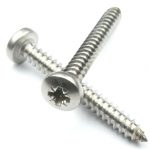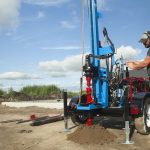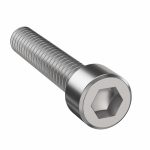Drills are available with a variety of point angles. The two most common drill bit angles are 118 degrees and 135 degrees. In this article, you will learn why a 118-degree angle provides the standard drill bit angle, the differences between 118-degree and 135-degree angle bits, and considerations when drilling a hole.
Why is 118-degree the Standard Drill Bit Angle?
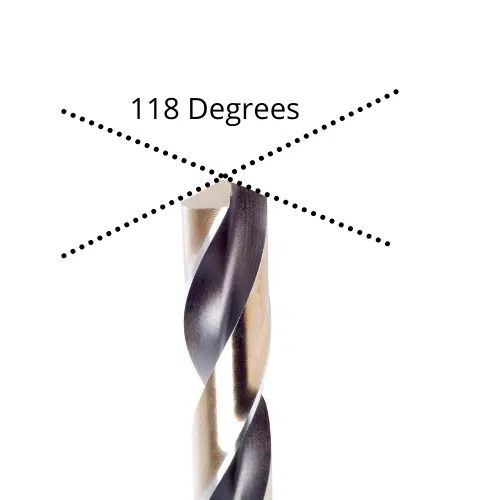
The 118-degree provides enough of a pitch angle to allow the point of the drill to bite into a material that may be out of plane or eccentric. Without a steep angle, the drill point would not always bite, which becomes particularly concerning when drilling into awkward angles.
There’s nothing magic about the 118-degree angle. Early trial and error work done by machinist pioneers such as Sharpe and Morse lead to this angle. It later became standard as it works well in wood, metal, plastic, and most other materials.
Lip Clearance Angle
In reality, lip clearance angles provide a better gauge as to the suitability of a general-purpose cutting tool, not the point angles. When lip clearance angles compromise or suffer from ineffective design, drilling efficiency plummets. For instance, if the cutting edge of an ax compromises, it will be unable to split a log effectively. As a result, lip clearance angles must change according to the hardness and machinability of the metal. There is less room for hard metals and more clearance for softer metals.
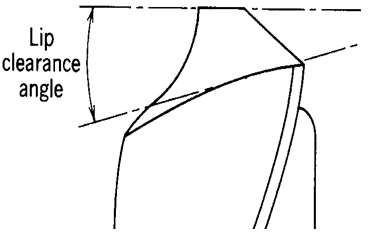
118° vs. 135° Angle Bits
In addition to the 118-degree angle, the 135-degree angle bit provides another common bit angle.
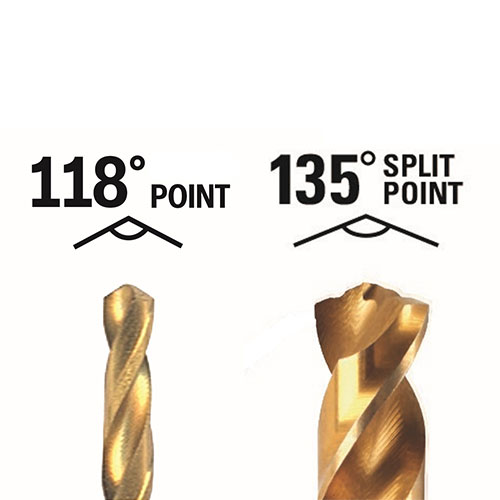
The following are the differences in how these two cutting angles are used.
Material
Drill bits with a 118-degree angle cut softer materials like wood and aluminum. Even though it can cut hard materials like steel, it shortens the tool’s lifespan and dulls it. As mentioned above, the 118-degree drill bit has become the industry’s standard for piercing permissive materials.
Expert drill devotees, on the other hand, frequently use 135-degree bits to penetrate harder materials. It will, for example, perform better when cutting stainless steel. This drill point angle used to make repetitive holes for hours.
Shape
The form of the two drill bits is another significant difference. The 118-degree is steeper and, as a result, edgier. It is less flat than the 135-degree bit due to the upright cutting angle.
The 135-degree angle, on the other hand, is less pointed and has a less sharp tip, even though more robust materials require it for exact angle cutting. The curve of 135 degrees is much flatter than that of 118-degree.
Pitch
The pitch quantity is the following difference. A drill bit with a 135-degree pitch has more than one with a 118-degree rise. As a result, 135 degrees is used by builders who need to drill through difficult and stubborn materials. This is because a 135-degree angle provides a better opportunity to make holes in unyielding elements. After all, they have more pitch. Because there is less of it, a 118-point angle is better for cutting through easy yielding materials.
Cutting Edges
The narrower the point angle, the longer the cutting edges, and vice versa. As a result, the 118-degree drill bit has longer cutting edges than the 135 drill bit due to its lesser angle. Indeed, the longer the drilling edge, the greater the cutting performance. The 118-degree drill bit with the longer edge surpasses the 135-degree bit in this regard. Because the cutting tip is shorter at 135 degrees, it has less cutting force.
Chisel
The 118-degree angle bit provides a smaller chisel and thus lower surface area contact when drilling a hole. On the other hand, 135-degree provides a longer chisel and more surface area. Thus, the 135-degree angle focuses more on continual drilling than making aggressive drill holes.
Considerations When Drilling a Hole
The three most essential considerations for drilling a hole are hole diameter, hole depth, and hole quality.
Hole Diameter
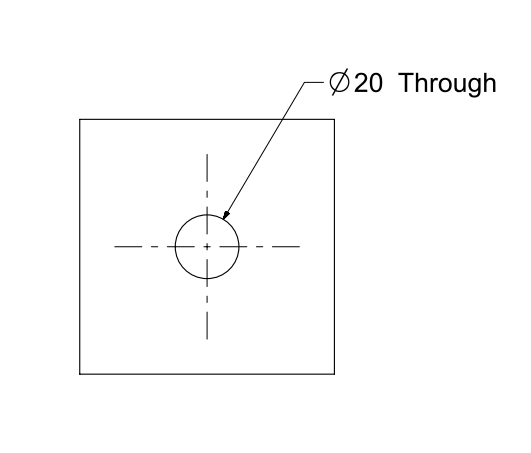
A hole diameter refers to a production tool’s diameter. So, the calculation of a hole size diameter differs for non-plated through holes and plated through holes. For a non-plated through-hole, the analysis is the sum of the finished hole size and +0.00mm/0mil.
On engineering drawings, simple holes are depicted simply stating the diameter and depth of the hole. For example, “20 Through” might be used to describe a 20 diameter hole that runs right through the component.
Hole Depth
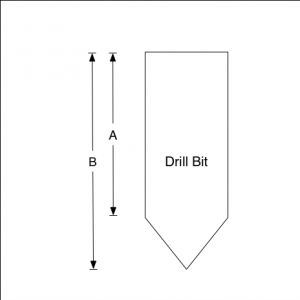
The length of a drill bit determines how deep the bit drills. This is an important consideration in bit selection. Mark the location of the desired hole with a wax writing instrument or a pencil. Lightly tap an indent in the middle of the mark with a hammer, using a center punch or a nail. Having an imprint will help to secure the drill bit in the proper position when drilling begins.
Hole Quality
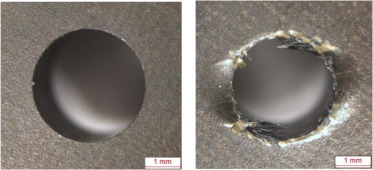
Hole quality is defined by ISO 286: System of Limits and Fits. The ISO System of Limits and Fits provides a coordinated system of hole and shaft tolerances. Its applicability ranges from engineering and manufacturing of cutting tools, material stock, gages, and other niche applications. The ISO 286 standard states: “hole basis fits [as opposed to shaft basis fits] have four preferred hole tolerances (H11, H9, H8, and H7).”

